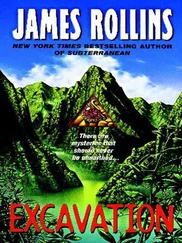Magnetism and Microbial Life
Can magnetic fields kill bacteria, viruses, and fungi? At the right static or oscillating fields, YES. The FDA has performed an entire study on the subject, even identifying the field strengths necessary to kill specific species.
Panspermia
This is the theory that life on earth might have come from a seed of organic life delivered to the planet via a meteor strike. The meteor mentioned in this book that caused the massive Wilkes Crater in Antarctica is believed to have triggered the Permian mass extinction, which came within a hairsbreadth of ending all life. So I wondered: If all those environmental niches were emptied out by this extinction, what if that same meteor brought something foreign to fertilize those newly emptied fields?
Antarctic Life
The Russians are currently continuing to drill into Lake Vostok, a lake as big as any of the Great Lakes, yet isolated for millennia miles under the ice. What life might be found there? Early signs: There’s plenty. But that southernmost continent is rife with odd biological details.
— In 1999, a virus was discovered on the ice that no animal or human is immune to.
— In 2014, a 1,500-year-old Antarctic moss was brought back to life. Likewise, in Siberia, a virus that had been frozen for 30,000 years was resurrected.
— The petrified remains of great forests have been found in multiple locations on that continent.
But so far, we’ve been literally barely scratching the surface. What’s truly under that ice is yet to be discovered. It should be interesting because of…
Antarctic Geology
Only recently have we begun to understand how weird that continent’s geology truly is. While the continent presents a frozen face, down deep it’s a warm, wet marshland. There are hundreds of subglacial lakes, often with rivers flowing between them, some as large as the Thames. There are waterfalls that flow up . There are active volcanoes, some with lava flowing under miles of ice. Just this past year (early 2014) scientists discovered Antarctica has a trench that dwarfs our Grand Canyon. In all of that strange and otherworldly landscape, what might yet be undiscovered?
Hacking the Brain
In my novel, Cutter Elwes has discovered a novel way of altering human intelligence to his own end. Is that possible? If anything, it’s likely conservative. The computer hackers of the eighties and nineties are becoming the biohackers of the new millennia. Even now researchers are studying viruses and bacteria that use chemical signals to control emotions and human thought. With the exponential rate of our ability to manipulate DNA — faster, cheaper, and with more control — anything will soon be possible.
DARPA’s Biological Technologies Office
DARPA has already been working at the cutting edges of robotics, prosthetics, and artificial intelligence. But in 2014, this new office was specifically born to go all in on biotechnology, to “explore the increasingly dynamic intersection of biology and the physical sciences.” Stay tuned!
In this novel, different researchers espoused various pathways around or through this sixth extinction. I’ve attended debates, read extensively, and pored through articles on the multiple sides of this complicated issue, but I thought I’d talk a little about the origin of some of these
Scientific Philosophies
Conservation/Preservation
This encompasses those environmentalists who seek to save species or bolster environments to support the endangered. This camp also includes those who seek to revive the extinct. In some circles, this is viewed as “old-school environmentalism.”
Synthetic Biologists
Right or wrong, this is where the young, excited scientists seek to use genetic manipulation and the creation of synthetic life to reengineer the world. While there certainly is a measure of hubris and danger down this path, it also shows great promise.
New Ecologists
I came upon a fascinating interview of ecologist Craig Thomas in New Scientist , where he espouses a new philosophical way of looking at extinction: basically as an opportunity. That a great extinction could lead to new and exciting life-forms, new pathways for evolution, even creating a New Eden. It’s a fascinating alternate way of looking at this Sixth Extinction.
Dark Mountain
It would be hard to do this movement justice in a small paragraph. So I encourage you to check out their website (http://dark-mountain.net), where you can read Uncivilisation: The Dark Mountain Manifesto by Dougald Hine and Paul Kingsnorth. Again it’s a radical new way of viewing this great Sixth Extinction.
In the character of Cutter Elwes, I tried to create a person who espoused a bastardized version of the last three philosophies, while pitting him against Kendall Hess, who advocates for the first two. And in fact that very philosophical war is being waged in the scientific community right now.
And it wouldn’t be a Sigma novel without a little (or a lot) of
History
Darwin and the Voyage of the Beagle
Charles Darwin did visit the Fuegian natives in the Tierra del Fuego region of South America. The people were skilled sailors, and it’s not beyond the realm of possibilities that they had crude maps of their voyages in their possession. One other true detail is that Darwin did in fact not publish his famous treatise until twenty years after that fateful voyage. Which begs the historical question: Why?
Maps, Maps, and More Maps
Within these pages, you’ll find examples of ancient maps that depict what seemingly appears to be the continent of Antarctica — but without ice. While these are real maps, centuries old, the debates about them continue today. But what we do know is that ancient people have been navigating the world’s oceans for much longer than originally suspected. The nautical timeline for humankind keeps getting pushed farther and farther back into history. And with the destruction of the famous Library of Alexandria — that vast storehouse for all ancient knowledge — who knows what great truths vanished in those flames?
Germans in Antarctica
All of the historical details about the Nazi exploration and interest in Antarctica is based on facts, including the cryptic statements by Admiral Karl Dönitz during the Nuremberg trials and his oddly light prison sentence.
Americans in Antarctica
Operation Highjump, led by Admiral Byrd, was a real operation involving over 5,000 men. Yet it still remains shrouded in mystery. Byrd’s snow cruiser is also an actual vehicle and was shipped to that continent, only to eventually vanish into history (or under the ice). And yes, the U.S. government did test atomic bombs down there.
British in Antarctica
The British Antarctic Survey has been going strong down on the southernmost continent almost longer than any other country, changing its name in the process as described in this book. And the Haley VI station is an active British research post (unless it slid into the sea like it did in the pages of this book). It does indeed look like a centipede wearing giant skis.
Most of the “tech” of this book was already covered in the Science section, but there are a couple of additional gadgets worth mentioning.
Technology
Captive Air Amphibious Transport (CAAT)
While these vehicles are still in the prototype stage, they have built scaled-down versions of this vehicle that are fully operational. In fact, I chose to base the smaller CAATs featured in this book upon those prototypes (and I had to greatly refrain myself from not calling those mini-CAATs… “Kittens”).
Читать дальше










